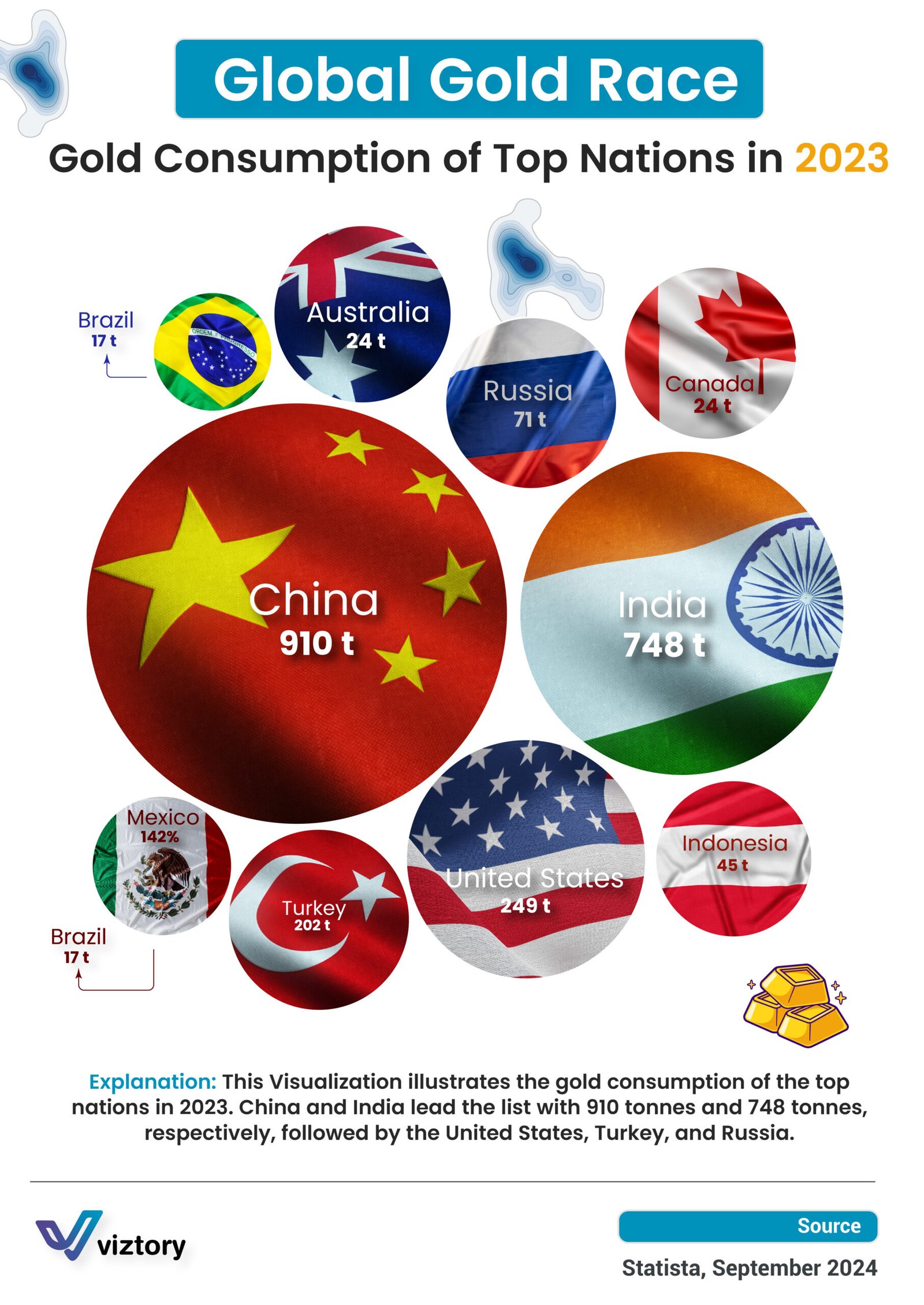The Global Gold Race
-
Sep, Tue, 2024
The Global Gold Race: Consumption and Its Economic Impact in 2023
Introduction:
The image illustrates gold consumption by leading countries in 2023, with China topping the list with 910 tonnes, followed by India with 748 tonnes. Gold is a critical financial asset contributing to the stability of economies and plays a key role in monetary policies and international trade. In this article, we will explore the impact of gold consumption on the global economy.
Gold as a Financial Asset:
Gold is one of the safest financial assets, often used by investors as a safe haven during economic crises. China, which consumed 910 tonnes of gold in 2023, is one of the largest buyers of gold globally. This significant consumption reflects China’s desire to diversify its monetary reserves and increase reliance on gold as a hedge against global market volatility.
Consumption and Economic Impact:
Alongside China, India ranks second, consuming 748 tonnes of gold. This high demand can be attributed to Indian culture, which associates gold with wealth and financial stability, in addition to its essential role in social events such as weddings. The increased demand for gold in India leads to higher investments in the gold sector, positively influencing the local economy.
On the other hand, the United States consumes 249 tonnes of gold annually, highlighting the strength of the U.S. economy, which relies on gold as one of the pillars of its monetary reserves and to support the stability of the dollar. Similarly, Turkey and Russia have seen their gold consumption increase in 2023, with Turkey consuming 202 tonnes and Russia 71 tonnes. This reflects the growing trend of countries using gold as a tool to protect their economies from inflation and the depreciation of local currencies.
Factors Influencing Gold Prices:
The global price of gold is closely tied to rising demand from these countries. As gold consumption increases in major nations like China and India, its price in global markets rises. Given that gold is seen as a hedge against inflation and currency devaluation, its demand increases during economic instability, significantly driving up its price.
Gold Consumption in Emerging Economies:
Data from 2023 shows that countries like Indonesia, Mexico, and Brazil have increased their gold consumption, with Mexico consuming 142 tonnes, Indonesia 45 tonnes, and Brazil 17 tonnes. This growth reflects a new trend among these countries to bolster their economies by increasing their gold holdings, which strengthens local currency stability and helps curb inflation.
Conclusion:
Gold consumption in 2023 reflects nations’ focus on boosting their gold reserves to tackle global economic challenges. By increasing gold consumption, major countries like China, India, and the United States aim to strengthen their economies’ stability amid global market fluctuations, reinforcing gold’s role as a strategic financial asset in the global economy.

